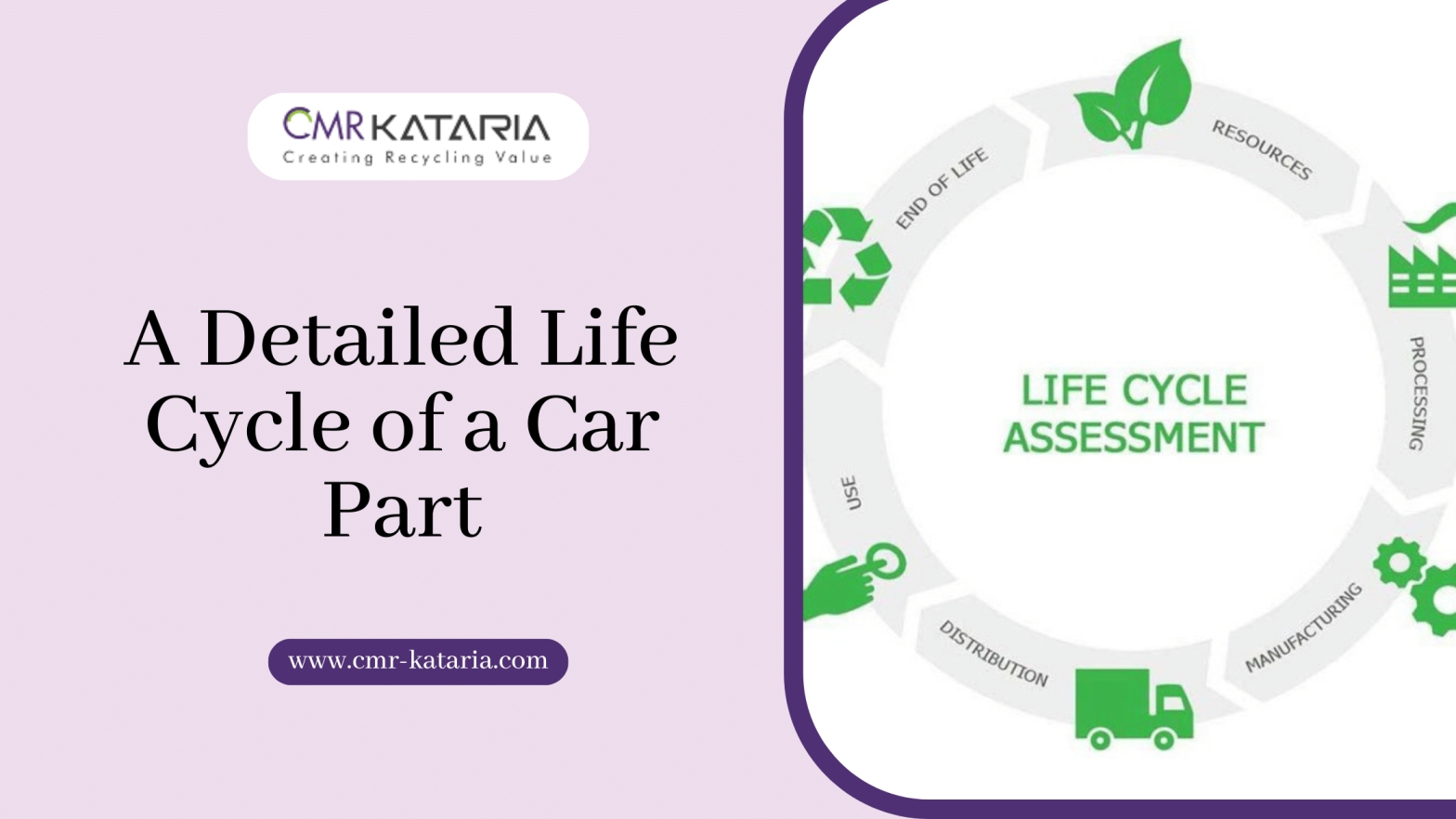Spare parts are the vital components of any vehicle and cars are no different. Different parts constitute and perform together to make a car which we all drive. We always look at the cars as whole but never think about those small and big parts that make those giant cars. Business of used car parts online India is huge and people sell and purchase thousands of car parts everyday depending on their requirements. A car part goes through a very long process of manufacturing to recycling throughout its life and in this article, we will discuss the life cycle of a car part from scratch.
Designing the Car Part
- Conceptualization and Sketching: Conceptualising the part and making preliminary sketches are the first steps. Here, engineers use their creativity and innovation while taking the part’s cost-effectiveness, performance, strength, and safety into account.
- CAD Modelling: CAD (Computer-Aided Design) modelling is used after the preliminary sketches. Before building the prototype, engineers can thoroughly examine the part’s design and make any necessary changes by developing a 3D model of it.
- Prototyping and Testing: Prototyping is the next step, during which a tangible model of the part is made. To make sure it satisfies all necessary performance and safety requirements, this prototype is put through a thorough testing process.
Manufacturing the car part
After the part has undergone design and prototype, it is prepared for manufacturing. This step-by-step process is essential to guaranteeing the quality and dependability of the finished product.
- Material Selection: Choosing and acquiring the right materials is the first stage in the production process. These can be made of metals or plastics, and the decision usually takes into account aspects like cost, durability, toughness, and environmental effect.
- Production Techniques: After the materials are located, they are processed through a number of steps to become the desired part. Depending on the part in question, these could include 3D printing, machining, moulding, or casting.
- Quality Control and Assurance: There are strict quality control and assurance procedures in place throughout the manufacturing process. With the use of these precautions, every component produced is guaranteed to fulfil all requirements and to function dependably.
Maintenance, Repairs, and Replacement.
- Routine Maintenance: Preventive maintenance and routine inspections are necessary for car parts maintenance. This procedure can assist preserve the general health of the car and prolong the life of a part.
- Common Repairs and Failures: Parts may still need to be repaired or fail despite maintenance attempts. Car owners can better plan for future troubles by being aware of which issues are more common than others.
- Identifying the Need for Replacement: Most auto parts will eventually need to be replaced. Maintaining vehicle performance and safety requires being aware of failure indicators and when a part is nearing the end of its useful life.
Recycling of Car Parts
Reducing the environmental impact of the automobile sector requires recycling car parts. There are numerous programmes and procedures in place to make it easier to recycle so that selling and purchasing of second hand car parts online India can be made easier.
- Reusing the Material: Car parts are made of a variety of recyclable and reusable materials, including rubber, plastic, and metals like steel and aluminium. Recycling these products lessens the need for new ones, saving resources and lessening the impact on the environment.
- Remanufacturing of part: Certain auto parts are remanufactured, which allows them to be utilised once again after being brought back to their original state. This procedure can greatly increase an automobile part’s lifespan and decrease the need for new ones.
Disposal of Non-Recyclable Car Parts
While a significant number of car parts are recycled or reused, not every part qualifies for such sustainable treatment. Some materials are either too degraded or composed of mixed substances that make them difficult to recycle efficiently.
Landfilling and Environmental Concerns:
Parts that cannot be reused or recycled often end up in landfills. Unfortunately, components made of certain plastics, synthetic fibres, and rubber can take decades or even centuries to decompose. Moreover, these materials can leach harmful chemicals into the soil and water over time, contributing to environmental pollution.
Safe Disposal Protocols:
Recognising this issue, the automobile industry and regulatory bodies have implemented strict protocols for the safe disposal of non-recyclable car parts. This includes draining hazardous fluids, isolating electronic waste, and using controlled environments for disposal. Awareness around these processes is growing, and authorised vehicle scrapping units in India are taking the lead in handling end-of-life vehicles (ELVs) responsibly.
Role of Authorised Vehicle Scrapping Facilities
The final destination for many worn-out or accident-damaged vehicles is an authorised scrapping yard. Here, every car undergoes a step-by-step dismantling procedure where parts are sorted based on their usability and recyclability.
Dismantling Process:
The car is first depolluted by removing all hazardous fluids like engine oil, brake fluid, coolant, and fuel. Following this, reusable components like alternators, engines, transmissions, and suspension parts are carefully extracted. These parts are then cleaned, tested, and made available for resale through online and offline used car part markets in India.
Scrap Metal Processing:
Once all useful parts are removed, the car’s metal body is shredded and sent for melting. The molten metal is then reprocessed into new products or raw materials for industries. This helps reduce the carbon footprint of producing metal from ores and plays a significant role in the circular economy of the automobile sector.
Importance of Used Car Part Market in India
India has a flourishing market for used car parts, catering to both individual customers and mechanics. Selling and purchasing second-hand car parts online has now become easier and more streamlined, thanks to the rise of dedicated online platforms.
Cost-Effective Solutions:
One of the major reasons for the popularity of used car parts is their affordability. New parts can be expensive and sometimes even unavailable, especially for older car models. In such cases, sourcing a good-quality used part can bring the vehicle back on the road at a fraction of the cost.
Availability and Accessibility:
From engines to bumpers, and from brake pads to sensors – almost every component is now available through online portals. These platforms often provide verified sellers, warranty on parts, and return policies, which boost buyer confidence and encourage responsible recycling practices.
Future of Car Parts in the EV Era
With the rise of electric vehicles (EVs), the landscape of car parts is evolving. While many traditional components like engines and exhaust systems will become obsolete, new parts such as battery packs, electric drivetrains, and charging modules are taking centre stage.
Battery Recycling Challenges:
One of the biggest concerns with EVs is the recycling of lithium-ion batteries. These are complex units with sensitive materials and require specialised recycling facilities. India is working toward building infrastructure and policy frameworks to address this challenge in the near future.
Innovation in Materials:
Automotive manufacturers are now focusing on sustainable materials – biodegradable plastics, lightweight alloys, and carbon composites – that are both high-performing and environmentally friendly. These innovations will influence how future car parts are manufactured, used, and recycled.
Conclusion
The journey of a car part is long, intricate, and full of transformation. From its conceptual design on an engineer’s desk to potentially ending up as recycled material or a second-hand spare, every car part contributes to the larger automotive ecosystem. With increasing awareness about sustainability and the growing demand for second-hand parts, especially online, the life cycle of a car part is becoming more efficient and eco-conscious. As consumers and stakeholders in this ecosystem, it is our responsibility to support practices that promote reuse, recycling, and proper disposal — ensuring that each car part lives its full potential before retirement.





